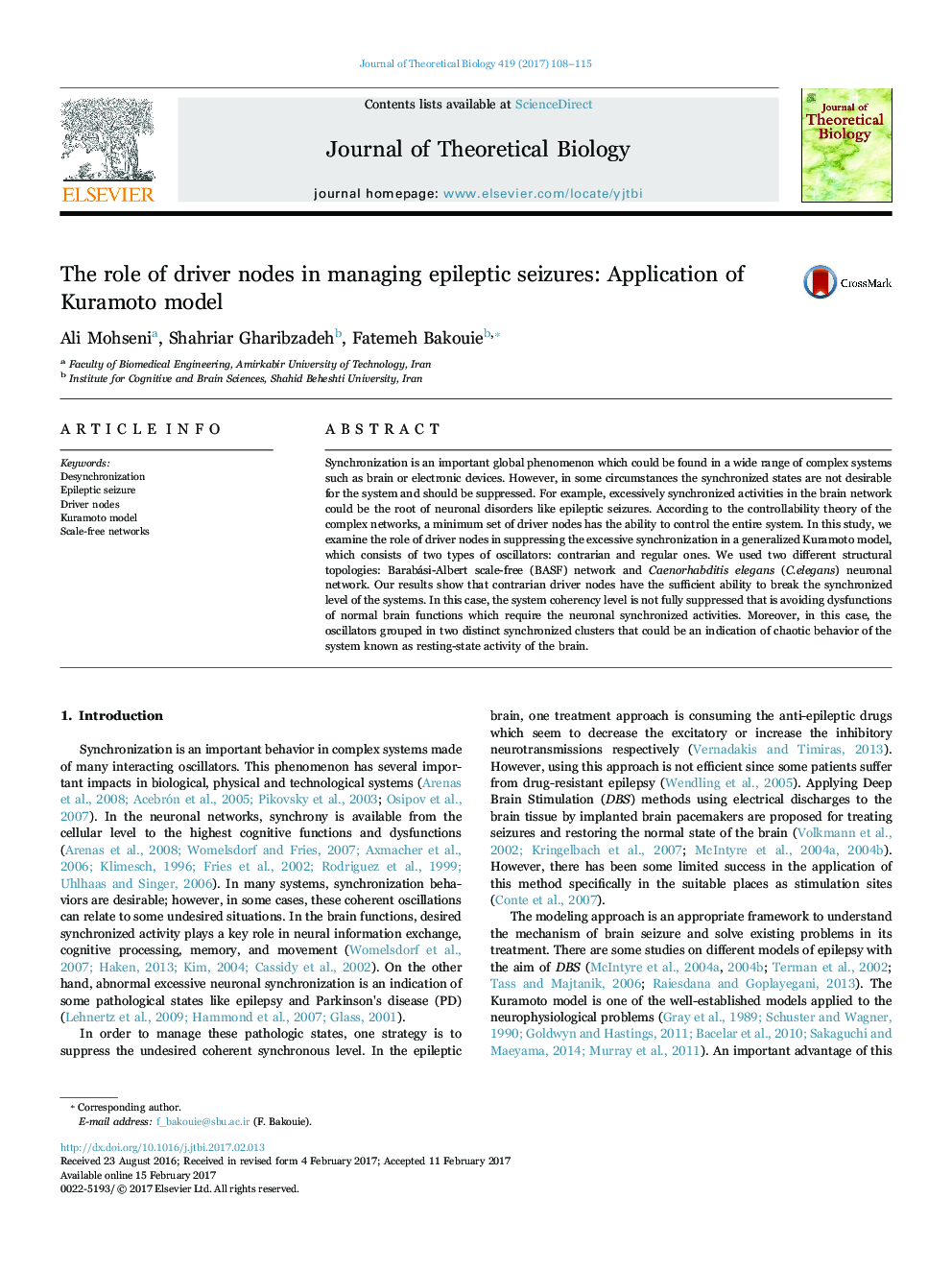| Article ID | Journal | Published Year | Pages | File Type |
|---|---|---|---|---|
| 5760128 | Journal of Theoretical Biology | 2017 | 8 Pages |
Abstract
Synchronization is an important global phenomenon which could be found in a wide range of complex systems such as brain or electronic devices. However, in some circumstances the synchronized states are not desirable for the system and should be suppressed. For example, excessively synchronized activities in the brain network could be the root of neuronal disorders like epileptic seizures. According to the controllability theory of the complex networks, a minimum set of driver nodes has the ability to control the entire system. In this study, we examine the role of driver nodes in suppressing the excessive synchronization in a generalized Kuramoto model, which consists of two types of oscillators: contrarian and regular ones. We used two different structural topologies: Barabási-Albert scale-free (BASF) network and Caenorhabditis elegans (C.elegans) neuronal network. Our results show that contrarian driver nodes have the sufficient ability to break the synchronized level of the systems. In this case, the system coherency level is not fully suppressed that is avoiding dysfunctions of normal brain functions which require the neuronal synchronized activities. Moreover, in this case, the oscillators grouped in two distinct synchronized clusters that could be an indication of chaotic behavior of the system known as resting-state activity of the brain.
Related Topics
Life Sciences
Agricultural and Biological Sciences
Agricultural and Biological Sciences (General)
Authors
Ali Mohseni, Shahriar Gharibzadeh, Fatemeh Bakouie,
